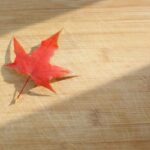There are about 1300 acacia trees or shrubs native to regions of Australia, Africa, and America. Acacia is a hardwood used primarily for flooring, furniture, and kitchen accessories. Acacia is a widespread and fast-growing tree, making it an easily renewable material. Acacia is a popular material for making cutting boards due to its durability, moisture resistance, and attractive appearance.
Is Acacia Wood Good for Chopping Boards
Acacia is a good choice of material for making cutting boards. Due to its strength, it is resistant to wear and tear. It is also resistant to moisture and has antibacterial properties. Due to the beautiful natural look and unique grain pattern, cutting boards made of acacia have a rustic charm and fit nicely into the kitchen decor. Since this wood is widespread and fast-growing, it meets the requirements of environmentally conscious users.

Acacia Cutting Board Pros and Cons
We’ll take a closer look at the biggest advantages of acacia cutting boards and their potential disadvantages.
Acacia Cutting Board Pros
Durable: Acacia wood is characterized by its strength and durability and can withstand a lot of wear and tear. With proper care, it can last for decades. Because it is a very hard wood, acacia is resistant to knife marks and is not prone to deformation. The acacia wood cutting board is one of the strongest and most durable cutting boards. One of the factors that affect the durability of the cutting board is the hardness of the wood. On the Janka scale, the acacia ranges from 1,700 to 1,750 and is considered one of the hardest tree species. Harder trees are less susceptible to knife damage, scratches, and dents than softwood.
Naturally beautiful: Acacia is visually interesting and comes in a variety of colors from light to dark brown. The beautiful grain pattern has swirls and streaks with knots. The bright, elegant tones of acacia can enhance the aesthetics of your kitchen. Dark shades and a beautiful appearance perfectly hide stains. Decorative acacia tones also create a fashionable serving tray.
Easy to clean: The acacia wood cutting board is very easy to clean. Acacia wood is non-porous and does not absorb liquids from food. Acacia also doesn’t absorb stains easily. This makes washing easier and reduces the possibility of contamination. To care for the acacia cutting board, it is necessary to wash it with warm, soapy water after each use. Rinse the board with warm water, dry it with a clean towel, and store it upright. Like any wooden board, the acacia board must also be occasionally treated with mineral oil or wax.

Anti-microbial: The dense grain and small pores make acacia wood resistant to the penetration of microbes. The natural oil content and moisture resistance also reduce the possibility of microbial growth. Humidity is known to promote the growth of bacteria and fungi. Additionally, resistance to knife marks is another factor that makes acacia boards more hygienic than most wooden cutting boards and a safe surface for food preparation.
Sustainable: Some users worry that wooden cutting boards are not eco-friendly. But considering that acacia is a widespread and fast-growing tree, acacia cutting board is an environmentally friendly kitchen product. Some other boards are made from wood that grows slower and has a shorter lifespan than acacia. If you want to reduce the negative impact on the environment, acacia wood cutting boards are considered the most sustainable wooden cutting boards.
Acacia Cutting Board Cons
Although it has many benefits, acacia is not the perfect wood for cutting boards. It’s good to know the not-so-good sides of this cutting board before you decide to purchase it.
- Due to the high density of the wood, acacia boards are very heavy. Larger pieces can be difficult to wash and move.
- Acacia is a very hard wood, much harder than maple, walnut, and cherry. High hardness has its advantages but can hurt knife blades. Acacia is not as bad for knives as bamboo but will wear out knife blades more quickly than softwood.
- Acacia boards can lose their original color when exposed to sunlight and take on a gray and less attractive color.
- Acacia is not heat resistant. Do not place a hot pan on the acacia wood cutting board as this may cause cracks in this otherwise very durable cutting board over time.
Is Acacia Wood Safe for Cutting Boards?
Acacia is a non-toxic wood and is safe to use as a food preparation surface. Antibacterial properties also make acacia safe for cutting boards. You should make sure that the acacia is treated with food-grade oil. Always buy a cutting board from a reputable manufacturer. To avoid cross-contamination, use boards specific to different foods. Check the board occasionally. If you notice larger cracks that could become a breeding ground for microbes, repair them, or replace the board.

Acacia Cutting Board vs. Maple
Both cutting boards are made of dense hardwood.
Durability: Acacia is denser and heavier wood and therefore more resistant to damage than maple. With normal care, an acacia wood cutting board will outlast a maple wood cutting board.
Appearance: When it comes to appearance, the choice depends on your customers’ preferences. Acacia has more color variations, ranging from light colors to deep dark brown, while the selection of maple cutting boards is limited. Maple stains easily due to its lighter color. On the other hand, acacias can turn a grayish color when exposed to sunlight.
Knife use: Hard maple has a Janka hardness of 1,450, while acacia is harder, around 1800. When it comes to the sharpness of your kitchen knives, maple has just the right amount of hardness, so maple cutting boards are more knife-friendly than those made from acacia wood.



